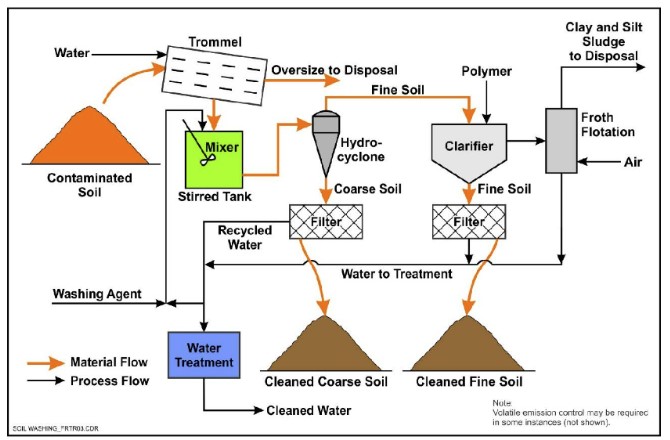Comprehensive PFAS Management Strategies for Contaminated Sites
Ingenious PFAS Therapy Solutions for Safer Water
The enhancing prevalence of PFAS contamination in water products requires an important evaluation of ingenious therapy remedies. Advanced purification technologies and unique chemical treatments existing promising methods for lowering these persistent toxins. Furthermore, emerging bioremediation strategies supply an even more lasting approach to tackling PFAS difficulties. As regulatory frameworks remain to adjust, understanding the effectiveness and scalability of these options becomes vital. What effects do these improvements hold for public health and wellness and environmental reconstruction, and exactly how can stakeholders effectively apply them in varied contexts?
Overview of PFAS Contamination
PFAS contamination has actually become a considerable ecological and public wellness worry. Per- and polyfluoroalkyl compounds (PFAS) are a group of synthetic chemicals recognized for their determination in the environment and human body, leading them to be generally referred to as "permanently chemicals." These substances have been widely used in various industries, consisting of firefighting foams, water-repellent textiles, and food packaging, largely due to their water- and grease-resistant residential or commercial properties.
The extensive use PFAS has resulted in their discovery in dirt, water materials, and also in the blood of human beings and animals. Researches have connected PFAS exposure to many health and wellness problems, consisting of developing results in babies, body immune system dysfunction, and various kinds of cancer. In addition, the environmental persistence of these compounds complicates their degradation and elimination, increasing issues about lasting ecological influences.
Governing bodies are increasingly applying strict guidelines to keep an eye on and decrease PFAS levels in drinking water and various other environmental tools. As recognition of PFAS contamination grows, it has actually become critical for neighborhoods and markets to seek effective treatment services to mitigate direct exposure and secure public wellness.
Advanced Purification Technologies
As the seriousness to resolve PFAS contamination intensifies, advanced purification technologies have arised as a pivotal part in the remediation efforts focused on eliminating these consistent chemicals from water resources. These modern technologies take advantage of innovative mechanisms to successfully target and catch PFAS substances, which are infamously resistant to conventional treatment techniques.
One of the most promising techniques is making use of granular triggered carbon (GAC), which adsorbs PFAS particles due to its high area and permeable framework. This method has been extensively applied in both metropolitan and industrial setups, showing substantial decreases in PFAS focus. Additionally, ion exchange materials have gotten grip, specifically developed to selectively bind PFAS ions from water, therefore promoting their elimination.
Membrane filtration innovations, such as reverse osmosis and nanofiltration, also show effectiveness in PFAS removal by physically dividing impurities from water - pfas management. These systems can accomplish high degrees of purity, making them suitable for drinking water description applications
Chemical Therapy Technologies
Countless chemical therapy advancements are being explored to efficiently attend to PFAS contamination in water supplies. One promising technique involves using innovative oxidation processes (AOPs), which make use of effective oxidants such as ozone, hydrogen peroxide, or chlorine dioxide combined with UV light to damage down PFAS compounds into less damaging substances. This approach has demonstrated efficacy in research laboratory settings, showing possible for scalability in real-world applications.
Another ingenious method is the growth of ion-exchange resins particularly made to target PFAS. These resins can selectively adsorb PFAS compounds from water, enabling their elimination during treatment processes. Recent advancements have enhanced the effectiveness and capacity of these materials, making them a beneficial option for water treatment centers.
Additionally, researchers are investigating the use of chemical agents like persulfate and ferrous ions to boost the destruction of PFAS in infected water. These representatives can cause chemical reactions that facilitate the break down of consistent PFAS substances.
Arising Bioremediation Methods
Current developments in chemical therapy advancements have actually led the way for exploring bioremediation strategies as a sensible choice for dealing with PFAS contamination. Bioremediation uses the all-natural metabolic processes of microbes to weaken or change toxins, making it an appealing method for dealing with persistent impurities like PFAS.
Arising techniques in bioremediation include the use of genetically crafted bacteria that can anchor particularly target and break down PFAS substances. These microbial pressures are being created for their boosted destruction capacities, enhancing the performance of the removal process. Furthermore, researchers are exploring the potential of plant-assisted bioremediation, where certain plant types might uptake and withdraw PFAS from infected soil and water.
Another promising approach is the application of bioaugmentation, which involves introducing helpful microbes into polluted atmospheres to improve the degradation of PFAS. This technique can assist in quicker remediation timelines and improve general performance.

Regulative Frameworks and Criteria
An extensive governing framework is vital for properly managing PFAS contamination and making certain public health protection. The increasing acknowledgment of per- and polyfluoroalkyl materials (PFAS) as ecological contaminants has actually triggered various federal and state firms to develop standards that regulate their visibility in water supplies. The United State Environmental Protection Agency (EPA) has actually established health advisories and is pursuing establishing enforceable restrictions for PFAS in alcohol consumption water.
State-level regulations vary substantially, with some states taking on more stringent standards than those suggested by the EPA. These regulations frequently consist of optimum impurity levels (MCLs) for particular PFAS compounds, surveillance needs, and reporting responsibilities for water energies. In addition, arising frameworks concentrate on the removal of infected websites, emphasizing the requirement for efficient treatment innovations.

Verdict
Finally, the advancement and execution of cutting-edge PFAS therapy solutions are vital for resolving the pervasive problem of water contamination. Advanced purification modern technologies, chemical therapies, and emerging bioremediation methods jointly provide a complex strategy to efficiently reduce and degrade PFAS levels. As regulative frameworks remain to advance, incorporating these technologies will be vital to safeguard public health and restore the stability of polluted water sources, eventually contributing to a cleaner and safer environment.